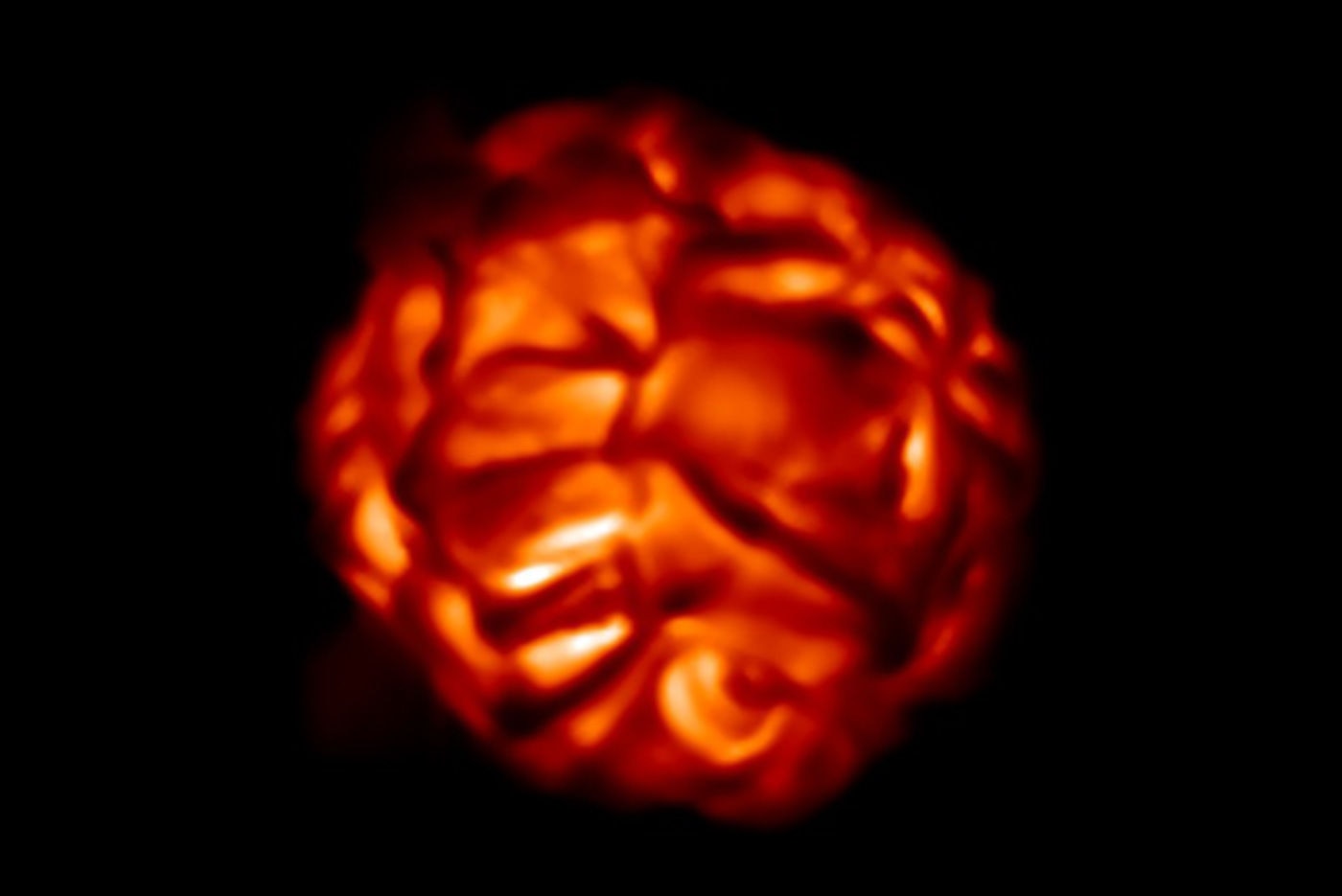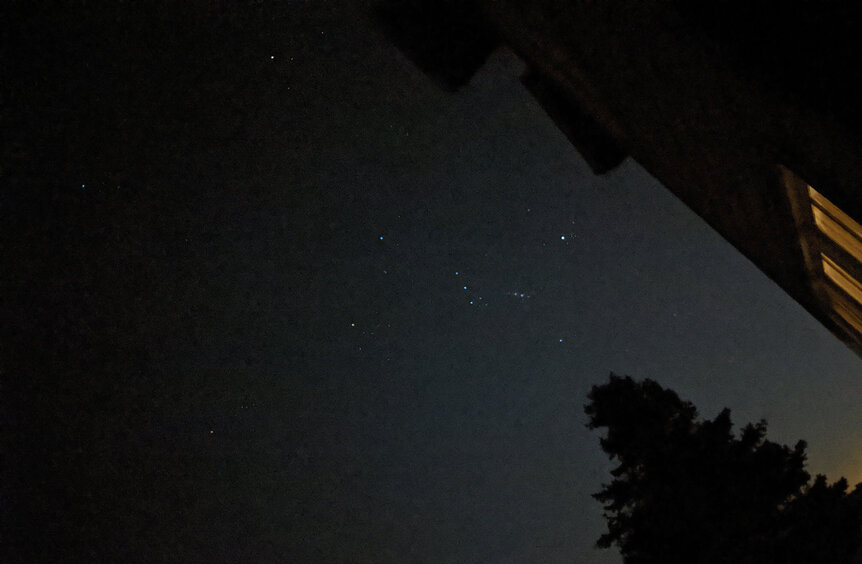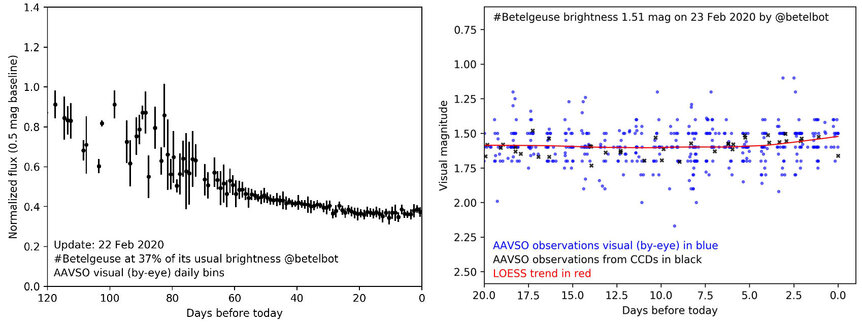Create a free profile to get unlimited access to exclusive videos, sweepstakes, and more!
No supernova for you: Betelgeuse is brightening again right on schedule

Maybe you'll be relieved, or maybe you'll be upset you missed out, but it really looks like Betelgeuse has turned a corner and is getting brighter again.
But hey, I warned you: It won't explode for another hundred millennia, give or take a few.
The story so far: A few months ago astronomers announced that the bright star had dimmed dramatically. More astronomers took a look, and sure enough, Betelgeuse had dimmed from its usual prominence to look like any other fair-to-middlin' bright star in Orion. I went outside the first clear night after it was announced and noticed it right away; instead of being about as bright as Rigel, marking Orion's left foot, it was more like Bellatrix, the much fainter star at Orion's left shoulder.
Over time, Betelgeuse kept dimming. It went from being the 11th brightest star in the sky to the 23rd. Not only that but its temperature dropped by about 100° C as well.
To be clear, in general this is pretty normal behavior for Betelgeuse. Conditions inside the star's upper layers cause it to brighten and dim a bit on a timescale of a little over a year; because of this we call it a variable star. It has a well-known period of about 420–430 days to go from bright to slightly dimmer to bright again. The usual change is enough to catch by eye if you're familiar with it.
This time, though, it dimmed a lot more, dropping down to about 35% of its usual brightness.
But that appears to be over. It started brightening again a week ago, though when first announced the measurements had enough uncertainty in them that I was unwilling to be convinced. Swayed, perhaps. But over the past few days it's been consistently brightening, and on 22 February 2020 the same astronomers who first announced its dimming made the call that it indeed is on the upswing once again. It hasn't brightened much, and you may not notice for a few weeks, but it does appear to be on the rebound. I'll note this happened about 424 days after the last time it bottomed out, so this is consistent with its usual cycle.
So what happened here? Why is it doing this?
First off, it has nothing to do with it eventually exploding.
It's a red supergiant, a star that started out roughly 20 times the mass of the Sun, fusing hydrogen into helium in its core. Due to its high mass that reaction runs quickly, taking just a few million years (the Sun will last for about 11 billion, for comparison). When the hydrogen ran out the core was made of helium. That contracted, heated up, and then started fusing into carbon. This is a much more energetic process, dumping vast amounts of energy into the star's upper layers.
There's enough helium in its core to fuse pretty constantly for about 100,000 years. Once it runs out, it'll fuse carbon into neon and other elements for about a thousand years. The neon will then fuse into oxygen, getting used up in just a single year, and then oxygen will fuse into silicon for about a day. Yes, a day. After that, the star will try to fuse silicon into iron, and that's when it'll explode. So most likely we have a long time before that happens. Many thousands of years at least.
The current fusion process of helium into carbon is a lot more energetic than fusing hydrogen into helium, and that energy is transferred upward from the core into the star's outer layers. When you increase the energy of a gas it expands, so Betelgeuse swelled up to become a supergiant, something over 600 times the diameter of the Sun. At least. It's not clear just how big it really is. Its temperature also dropped, causing it to turn red.
That's where we are now. So why the fluctuations in brightness?
The conditions inside the star are such that the most efficient way to move heat around is convection, with hot gas inside rising up to the surface, cooling, and falling back down. The size, mass, and temperature inside the star make these convection cells huge. Colossal. Gargantuan. In the Sun, where convection also occurs, these cells create granules on the surface the size of Texas or so. On Betelgeuse, they're nearly the same size as the star itself. A star a billion kilometers across!
This is the key to its dimming. The surface roils and boils on a timescale of a little over a year, bringing up hot (and therefore bright) gas, which cools (making it darker) and falls back down into the interior. As this happens, the star changes brightness.
Scientists have created physical models of the star to see how this works, and you can actually watch the star's brightness change:
Mesmerizing, isn't it? As you can see, those huge granulations really affect how the star looks, even its size and shape. That is very likely the explanation of the weird images of its disk released about a week ago, where half the star appears to have dramatically dimmed. That's likely due to a single convection cell cooling and dimming. Now that it's falling back down into the interior of Betelgeuse, the star will start to brighten again.
Also, in their upper atmospheres, stars like this can generate grains of corundum (aluminum oxide, Al2O3) and magnesium silicate (Mg2SiO4), what we call dust. It's quite opaque in visible light, absorbing light from the star. Shock waves generated in the star's atmosphere near the surface by the roiling gas can drive this material upward and away, surrounding the star in a blotchy cloud. If one of these was blown out in recent months that could also contribute to the historic dimming.
Whatever the cause, it seems to be abating right on schedule. And you can keep your eye on it now: Orion will be visible after sunset until late April, after which it gets too close to the Sun from our viewpoint. Even then, if you're an early riser, it'll be back in the late summer before sunrise.
So welcome back, Betelgeuse. I'm glad you did what you did, getting folks excited about astronomy, and showing us all that the Universe is a changing, evolving place, even on human timescales.
My thanks to astronomer Regner Trampedach for showing me models of convection in Betelgeuse, and pointing me to papers on that and dust creation.





























